FORT IRWIN, Calif. - More than a week into the 3rd Armored Cavalry Regiment's rotation at the U.S. Army National Training Center at Fort Irwin, Calif., the sight and sound of helicopters flying overhead has become familiar to the Soldiers who work at the forward operating bases and patrol the neighboring villages.
Although these areas have been built-up and developed to recreate Iraq, where the regiment will deploy later this year, the natural landscape is what makes these vast training grounds a perfect fit for the UH-60 Blackhawk pilots and door gunners of the 4th Squadron, 3rd ACR.
"NTC is a really good place to train because it's extremely expansive," said Capt. Ronald Brown, UH-60 pilot with Stetson Troop, 4-3 ACR. "The mountainous area is very good for training UH-60 crews. We train mostly on the high altitudes and landing in extremely dusty areas."
Dust represents the biggest challenge during landing when winds caused by the movement of the rotor blades can create a brownout effect, leaving the pilots with extremely limited visibility. Cooperation and communication between the pilots and the crew is essential.
"Crew coordination is huge because they are our eyes and ears from the back of the helicopter. Pilots can't see from their sides and back. They call out hazards," said Brown, who has served in the Army for 18 years and deployed to Saudi Arabia in Desert Shield/Desert Storm and more recently to Iraq in 2007.
The helicopter he pilots, the UH-60, is designed to be used by the Army for the transport of Soldiers and cargo. It can carry up to 11 Soldiers in full combat gear and sling-load (a process of tethering a large container to the bottom of the helicopter) up to 9,000 pounds. It is also used for air assault operations and casualty evacuation and can be modified to have additional attack capabilities.
"The UH-60 is the most versatile aircraft in the arsenal," said Brown, a Tulsa, Okla., native.
On May 26, the focus of the mission for Brown and his helicopter crew at NTC was building weapons familiarization for their door gunners during a live-fire range. The door gunner, armed with a specially modified M-240 machine gun, has a unique obstacle when engaging hostile targets.
"It's really challenging to hit targets from the aircraft because you're moving at about 110 knots (126 mph)," said Sgt. Joy Kinzer, 4-3 ACR crew chief and UH-60 mechanic. "Plus all the wind created by the aircraft makes your bullets act a little differently, especially at greater distances."
Kinzer has worked with UH-60 helicopters for more than seven years and deployed to Iraq twice. She stressed the importance of the weapon familiarization phase of training.
"In the heat of battle, if someone does start firing on them then they need to know what to do, especially if that weapon has a jam," said Kinzer, a Milwaukee native. "They need to be able to fix that jam to protect the aircraft and whatever cargo it's carrying."
Over the course of two hours and multiple flights, Kinzer and several other Soldiers rotate into the door gunner position and engage more than 100 targets across a 10-kilometer area of desert and mountains. The targets included recycled tanks, trucks, and human silhouettes carrying weapons.
"Just about anything that we'd see on the battlefield is out there for us to use as target practice," said Kinzer.
Although the 4-3 ACR is scheduled to break from the regiment later this year and form a new combat aviation brigade, the training at NTC will be useful for any future deployments and missions.
"The training at NTC is very realistic for the most part," said Brown. "Maybe in theater it's even a little bit nicer than it is here which is good because the more you suffer out here the better prepared you are for when you have to go out there and do it for real."
-30-
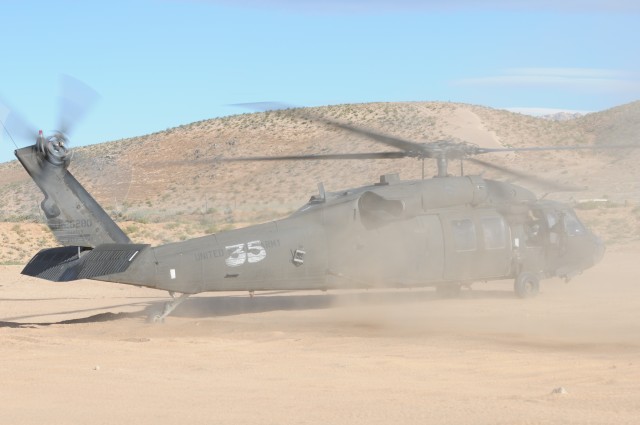
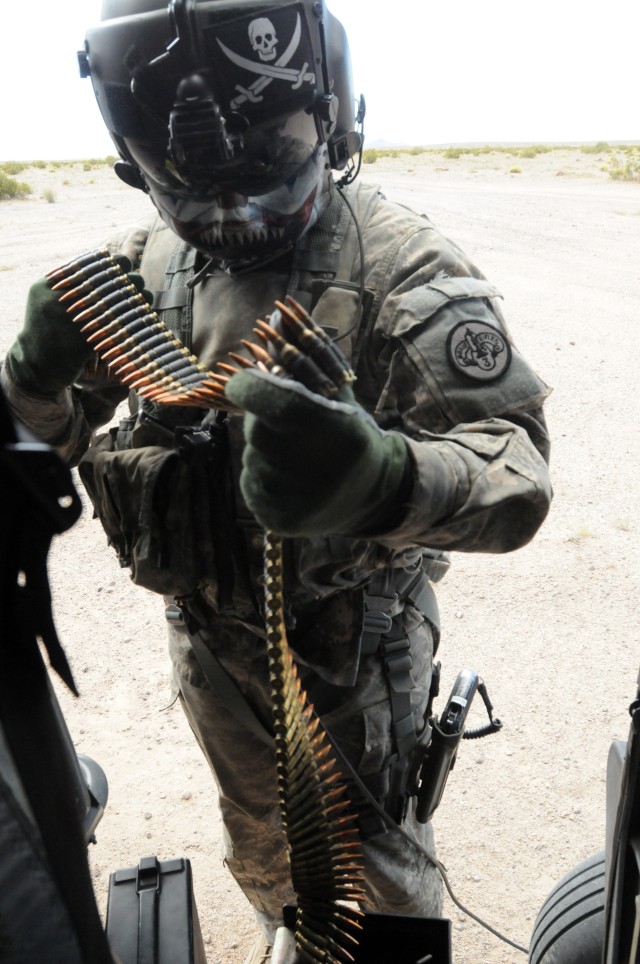
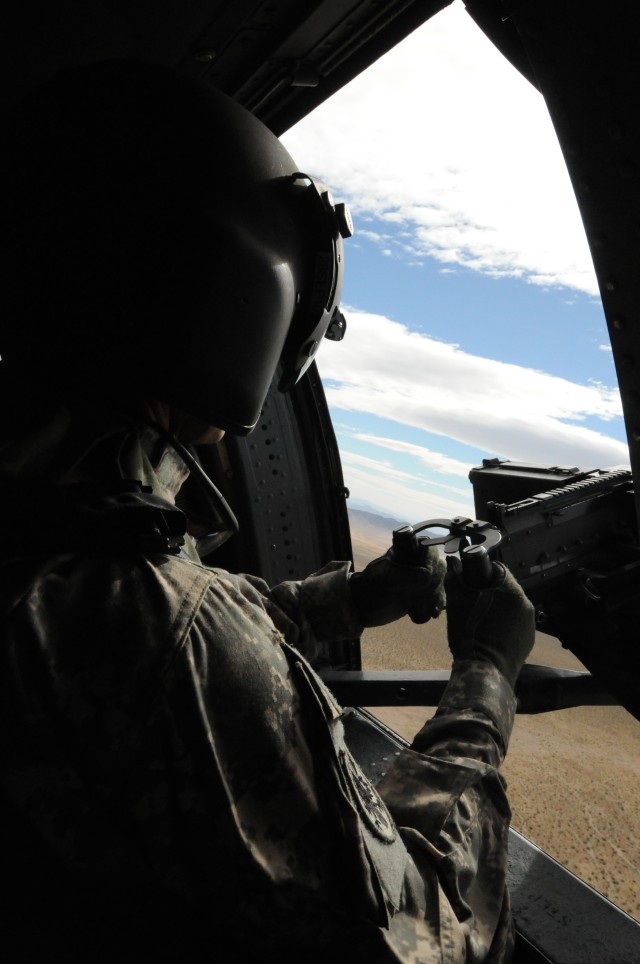
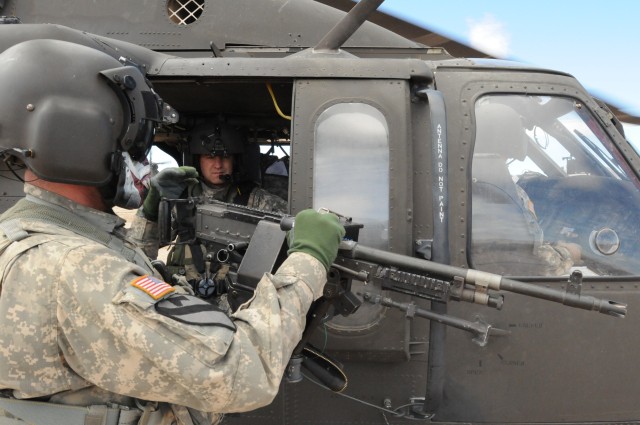
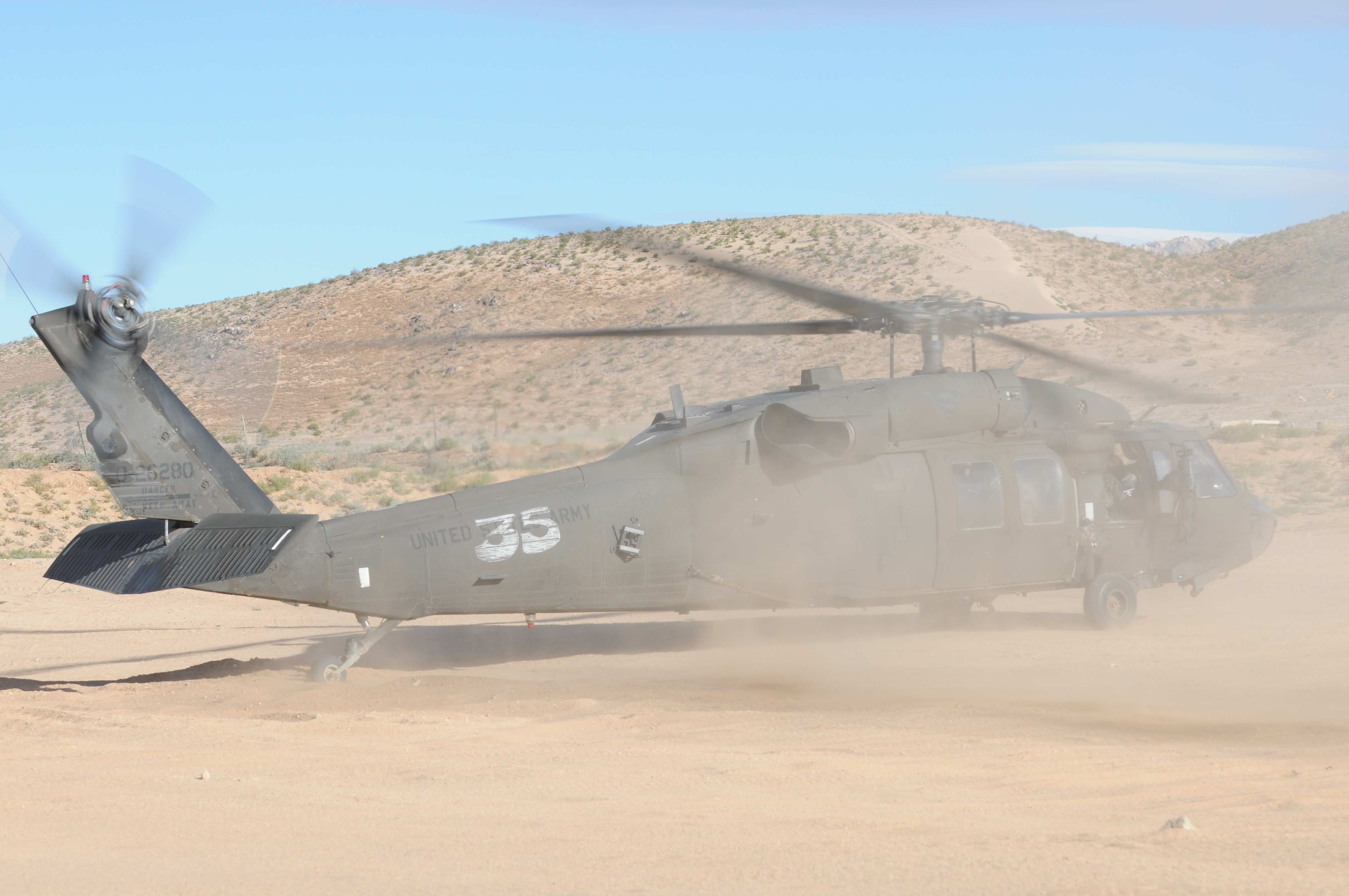
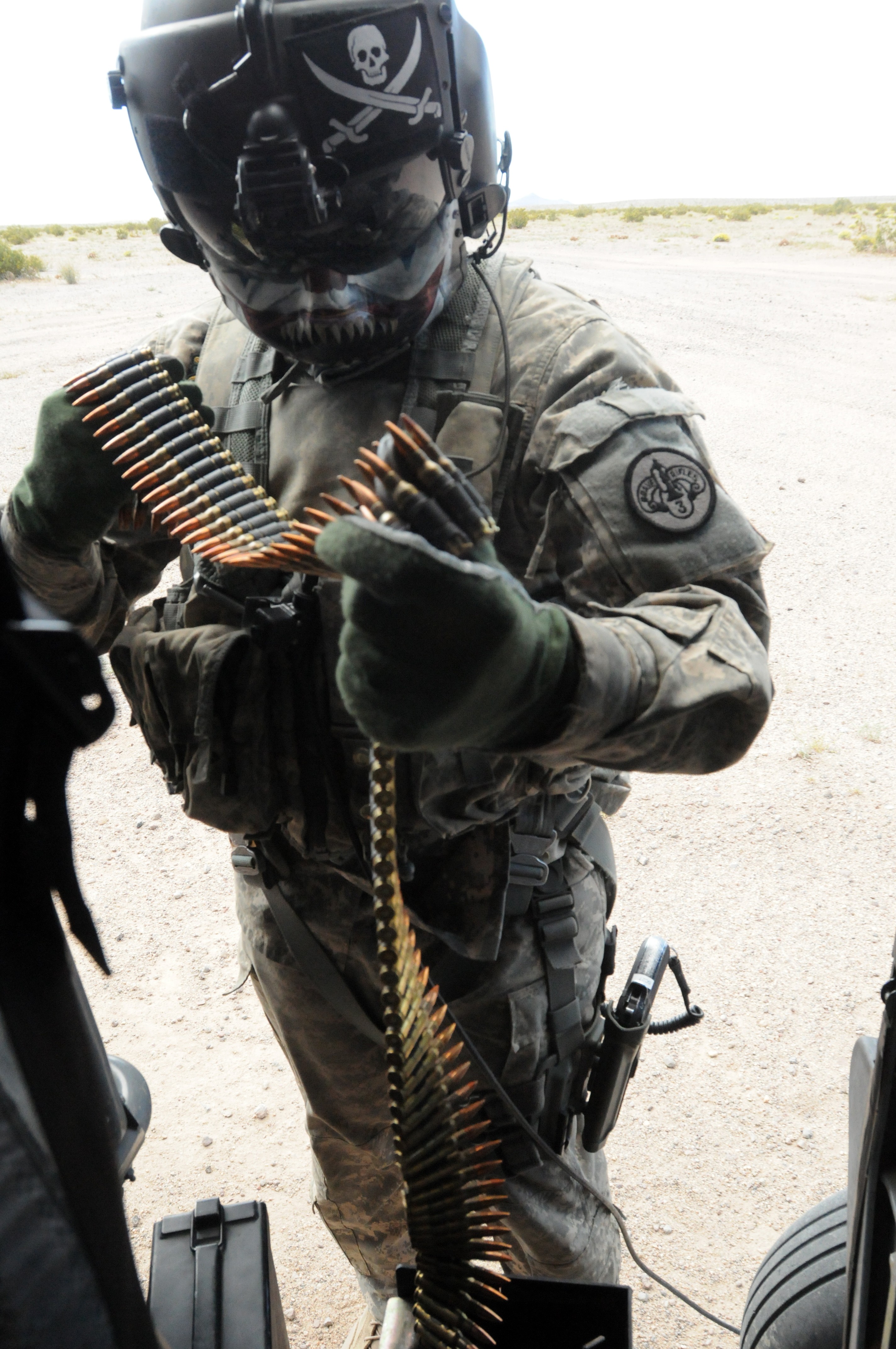
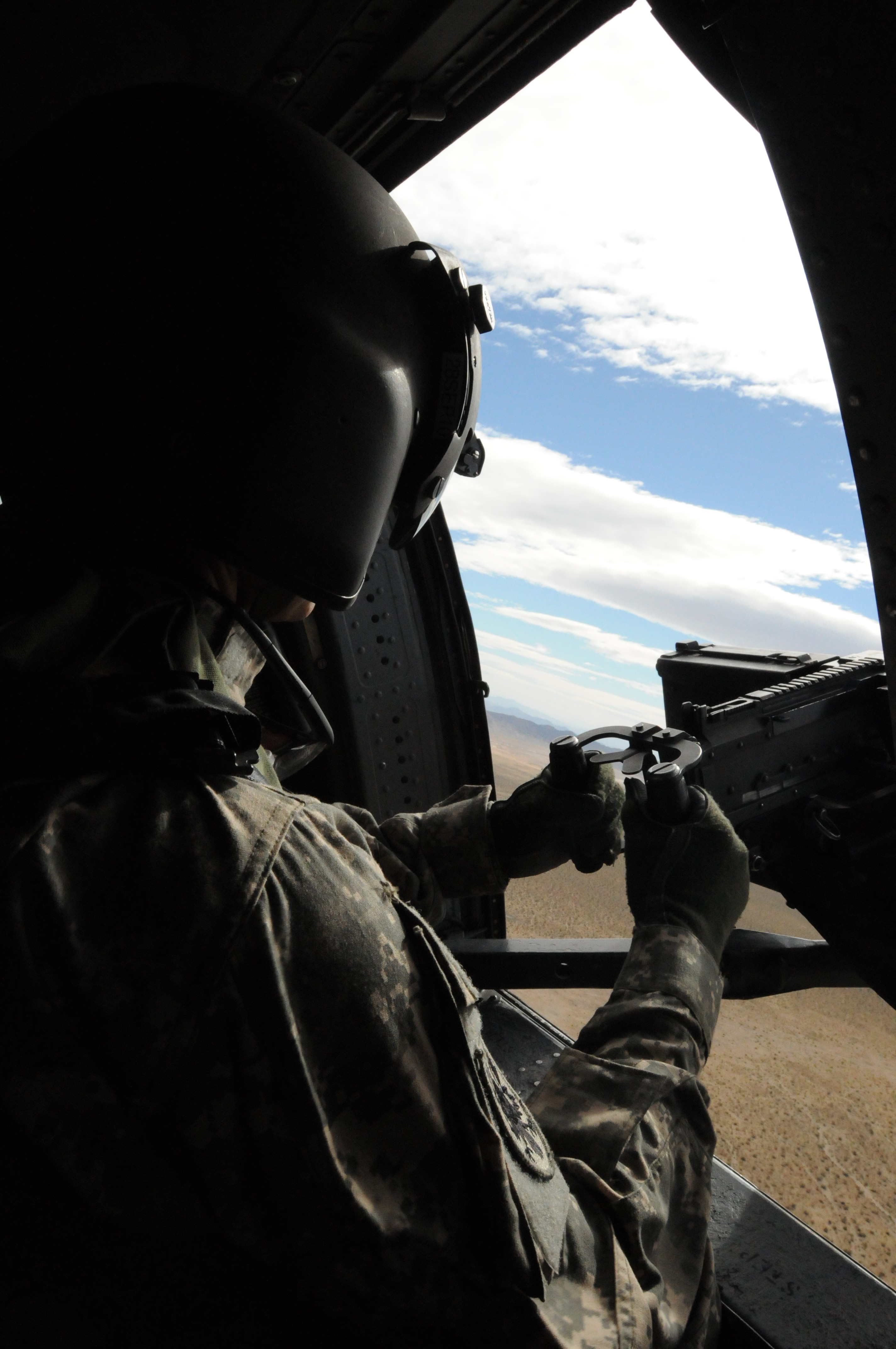
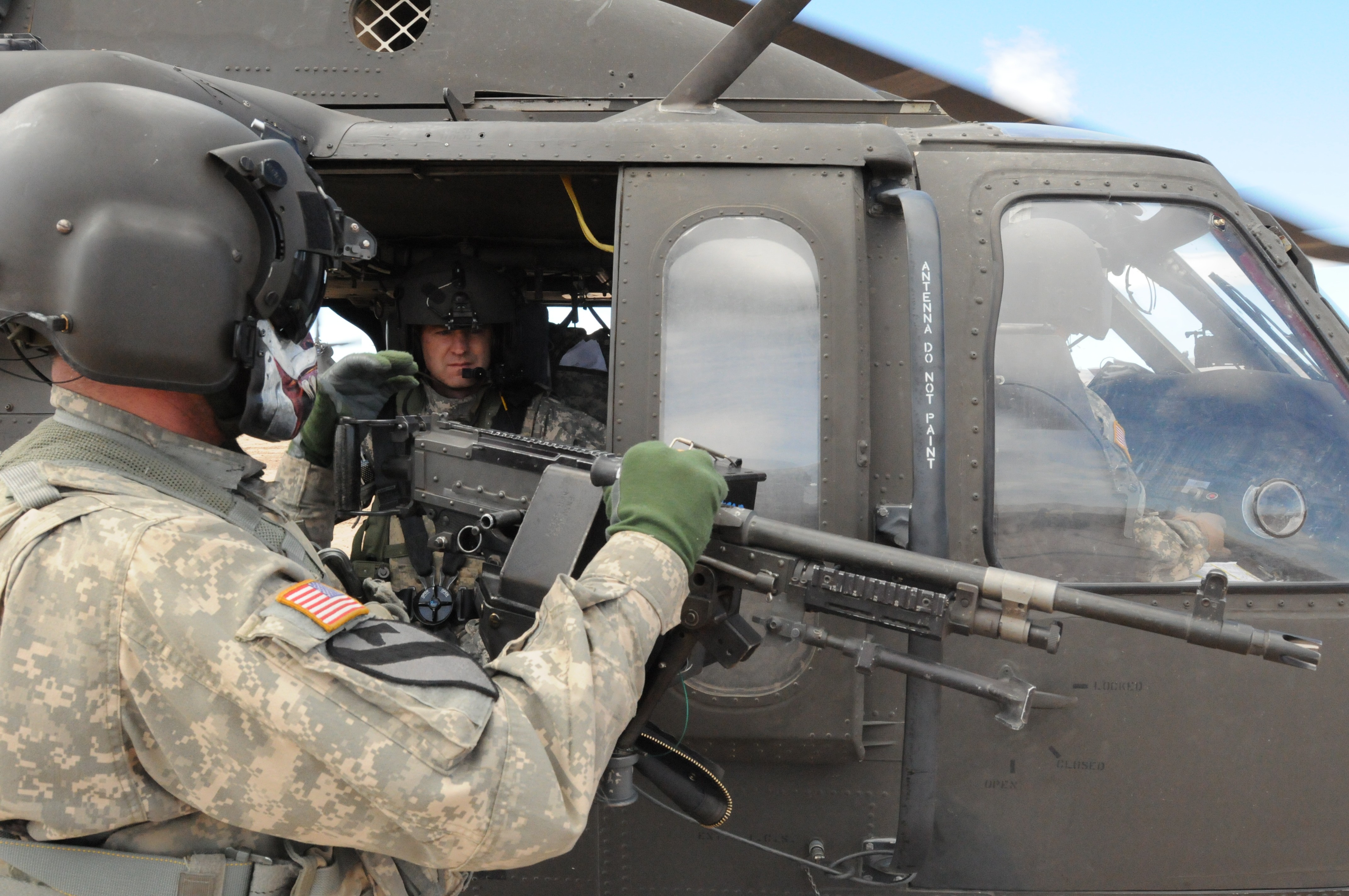
Social Sharing